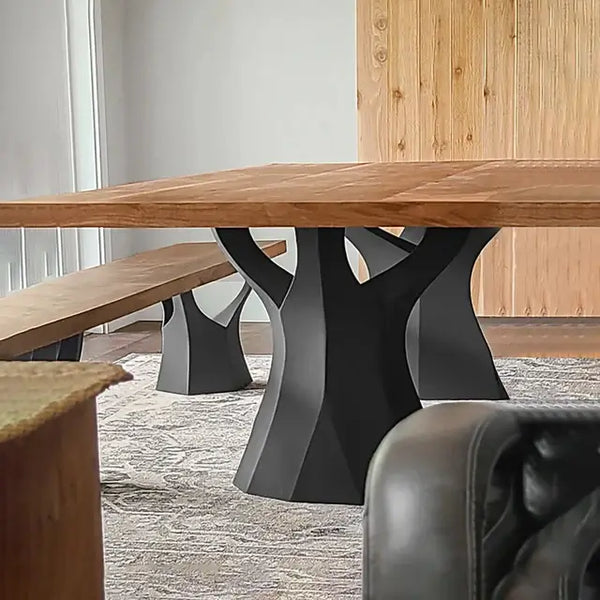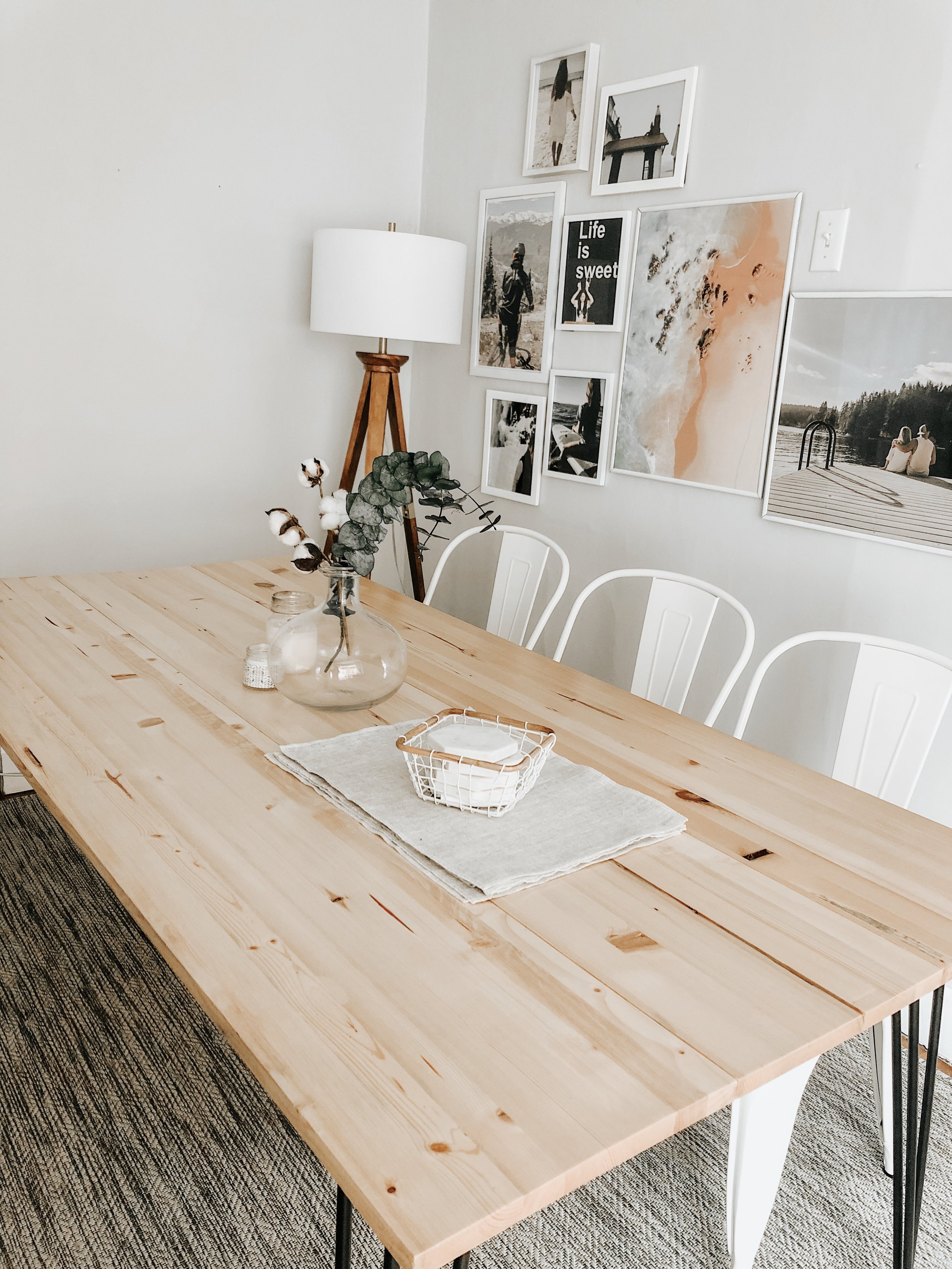From Standard to Modern: Locate the Ideal Eating Space Table Legs for Your Design
While timeless layouts such as cabriole and transformed legs evoke a feeling of timeless elegance, contemporary styles like hairpin and geometric choices offer a possibility for striking visual passion. As you consider these aspects, the inquiry remains: how can you effortlessly incorporate these varied leg designs to produce a harmonious eating experience?
Recognizing Table Leg Styles
The range of dining-room table leg styles can substantially influence both the aesthetic appeals and performance of the area. Each leg design adds distinct functional attributes and visual elements, catering to varied design preferences and usage needs. Recognizing these styles is essential for picking the right table that straightens with your general indoor style vision.
As an example, tapered legs offer a clean, classic appearance that can enhance a space's sophistication, while pedestal bases supply stability and maximize legroom, making them excellent for smaller rooms. Barrette legs, a hallmark of mid-century modern layout, introduce a commercial flair, allowing for a ventilated, open feel. Trestle legs stimulate rustic charm, supplying durable assistance and a sense of timelessness.
Moreover, the option of materials plays a considerable function. Wood legs can bring heat and appearance, whereas steel options typically convey a sleek, contemporary ambiance. Eventually, understanding table leg styles is essential for creating a natural eating area that mirrors individual style while guaranteeing functionality and comfort. By attentively thinking about these elements, you can enhance both the visual and functional charm of your eating space.
Conventional Table Leg Options
When picking eating room table legs, conventional choices usually embody timeless beauty and workmanship. These styles mirror an abundant heritage and a dedication to top quality, making them perfect for those who appreciate traditional appearances.
Among one of the most iconic conventional leg styles is the cabriole leg, defined by its stylish rounded shape. This style typically includes ornamental carvings and is most frequently discovered in Queen Anne and Chippendale furniture. One more prominent option is the turned leg, which boasts a collection of smooth, rounded shapes that provide a classic appearance while keeping security.
Moreover, the straight leg, while basic, uses a unadorned and sturdy framework that can mix effortlessly with a range of tabletop styles. For those drawn to ornate describing, claw-and-ball feet legs stimulate a sense of splendour and can serve as a magnificent prime focus in any type of dining space.
Last but not least, stand bases, although not strictly legs, give a different standard alternative that enables ample legroom and can be wonderfully sculpted. Each of these traditional leg designs adds to the total setting of a dining-room, weding function with visual charm.

Modern Table Leg Designs
Modern table leg designs use a diverse array of designs that highlight ingenious materials and tidy lines. These read more designs usually prioritize capability while functioning as striking prime focus within a dining area. Minimal looks are prevalent, with legs crafted from products such as steel, glass, and engineered timber, which add to a modern and airy feeling.
One preferred design is the barrette leg, identified by its slender, conical framework that provides stability without frustrating the table top (dining room table legs). This style is commonly found in mid-century contemporary furnishings and can easily complement different eating table forms. Another pattern is the usage of geometric forms, where legs may take on unbalanced or angular kinds, adding visual rate you can try these out of interest and a touch of virtuosity

Blending Designs for One-of-a-kind Rooms
Usually, home owners look for to produce distinct dining rooms that show their personal style by mixing different style elements. This approach enables the consolidation of diverse visual appeals, resulting in an unified yet unique atmosphere. For example, coupling a rustic wood table with smooth, contemporary steel legs can produce a captivating contrast that boosts the space's overall allure.
In addition, incorporating vintage table legs with contemporary table tops can evoke a feeling of history while preserving a modern perceptiveness. Such combinations not just showcase private taste however also motivate creative thinking, enabling homeowners to curate an area that feels both individual and inviting.
Color plays a vital duty in this visit this site mixing process; choosing table legs that complement or contrast with the existing color pattern can improve aesthetic interest. Whitewashed legs can soften the boldness of a dark table surface area, creating a well balanced aesthetic.
Tips for Selecting the Right Legs
Choosing the right table legs is essential for accomplishing both capability and aesthetic appeal in your eating room. Begin by considering the general design of your area. Traditional settings gain from legs that include detailed makings or turned designs, while contemporary areas might ask for streamlined, minimalist styles.
Next, evaluate the height and security of the legs. dining room table legs. Typical eating tables vary between 28 to 30 inches in height, so guarantee the legs match this measurement for comfort. Furthermore, durable products, such as wood or steel, can improve security and durability
Examine the leg form too-- alternatives consist of right, tapered, or stand styles. Straight legs use a timeless appearance, while conical legs can include a touch of sophistication. Pedestal bases supply adequate legroom and are suitable for smaller sized areas.
Final Thought
In summary, choosing the optimal dining-room table legs calls for mindful factor to consider of both contemporary and conventional styles. Traditional alternatives such as cabriole and transformed legs supply classic style, while modern designs like barrette and geometric shapes provide a modern touch. By integrating leg design, height, and product with the total design, a cohesive and inviting ambience can be accomplished. Ultimately, the chosen table legs need to show the desired visual, improving the dining experience within the room.
The selection of dining area table leg styles can dramatically influence both the aesthetic appeals and functionality of the room. Eventually, recognizing table leg styles is essential for producing a natural dining location that reflects individual design while guaranteeing usefulness and comfort.One of the most legendary conventional leg designs is the cabriole leg, characterized by its stylish bent shape. Straight legs provide a timeless look, while conical legs can include a touch of elegance.In summary, picking the perfect eating area table legs requires cautious factor to consider of both modern-day and traditional styles.